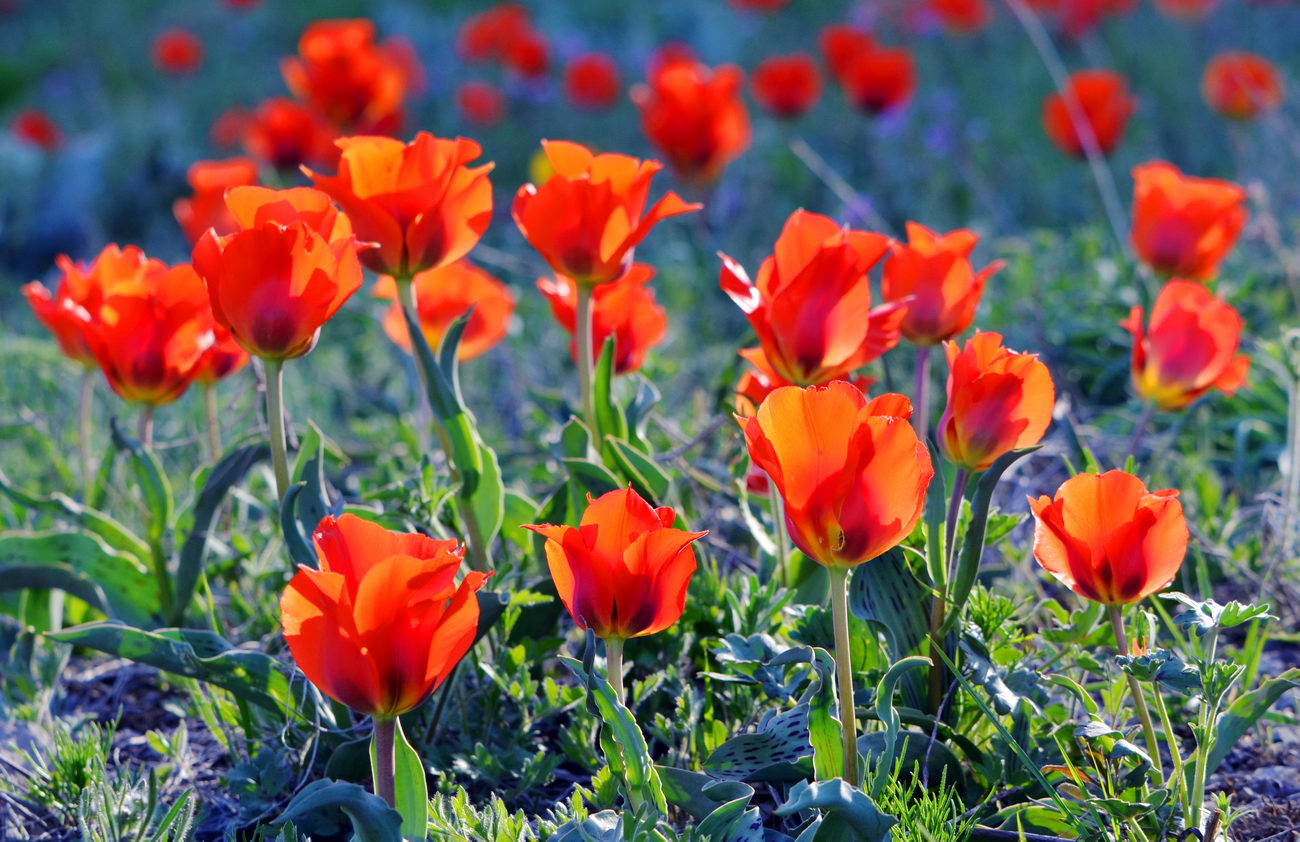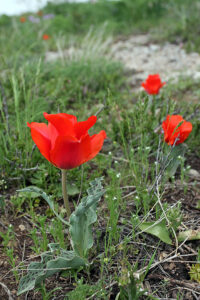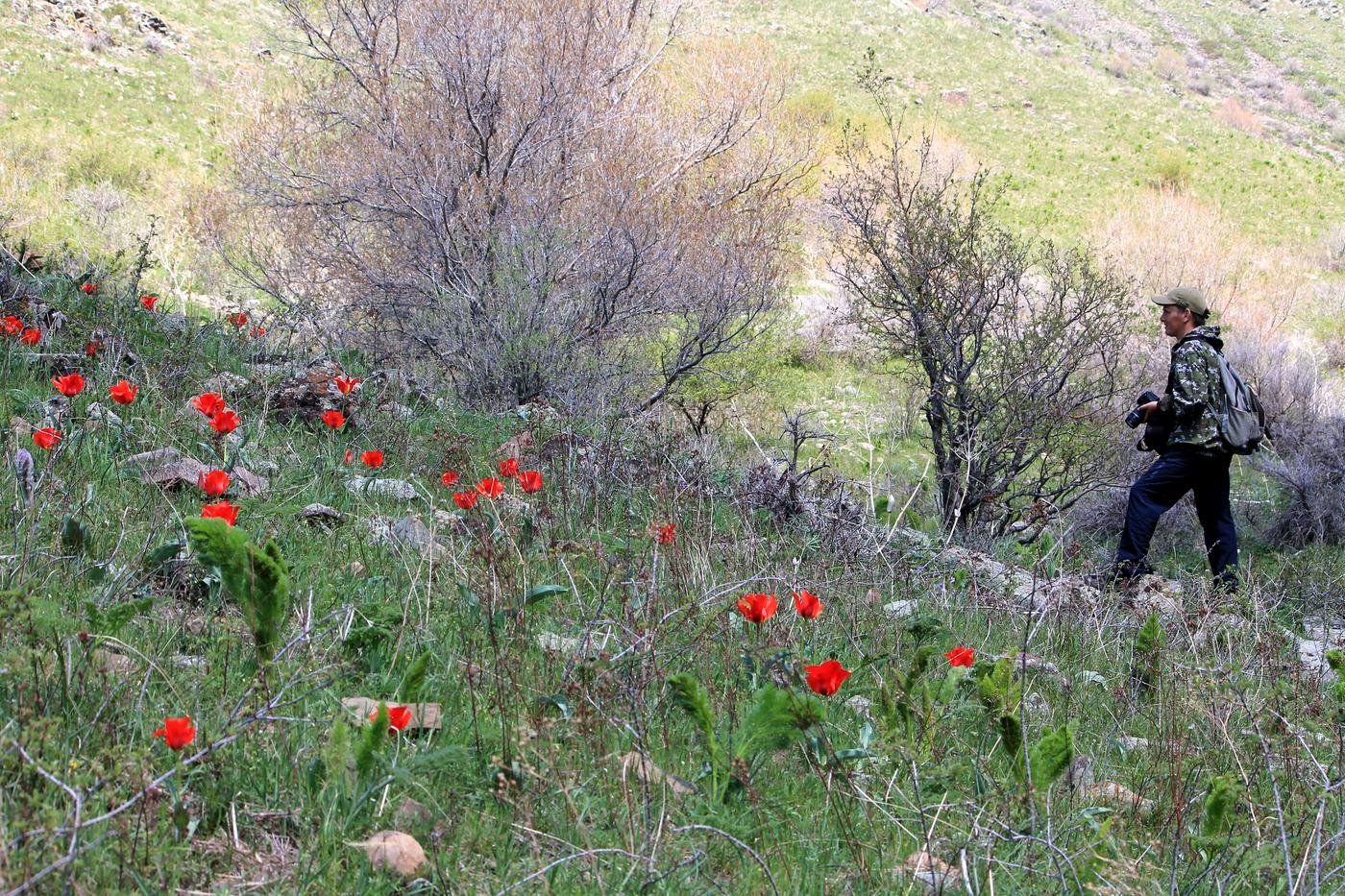ASTANA – Spring manifests itself in many ways, but the blossom of tulips might be among the most welcomed in Kazakhstan, the land where dozens of tulip species originate.

Greig’s tulip blooming in the fields of the Turkistan Region. Photo credit: Pavel Gorbunov/plantarium.ru
For Kazakh people, a brief but intense period when the flowers are in bloom is a reminder of life’s transience. They are beloved for signaling the arrival of spring holidays and warmer days. These flowers blossom on the steppes of Kazakhstan from late March, when the grip of winter is still upon the lands, till late June.
The southern regions of Kazakhstan celebrate this blossoming period with annual tulip festivals.
The history of tulips
It is not just the tulips’ beauty that fascinates people but its history of origin too.
The world is spoiled by the Dutch legacy of selection and breeding of over 3,000 cultivated varieties of tulips that are sold worldwide. But the original home of the tulips is not the Netherlands, a fact unknown to many.

Tulip fields in the Netherlands gather thousands of tourists every year as the country expands the tulip industry with over 3,000 cultivated varieties. But the wild tulip originated in the Central Asian region. Photo credit: discoverholland.com
The first tulips came to the kingdom of the Netherlands over 400 years ago from Türkiye, where they were brought from Central Asia. They originated in the mountainous regions and adjacent deserts of Kazakhstan and Central Asia more than 10 to 20 million years ago. From there, they spread to the west and the north.
The Turks were the first to grow tulips in their gardens, even before the Dutch were involved in selecting and breeding these beautiful plants.
Tulips were among the favorite motifs of Kazakh artisans to decorate gold and silver jewelry and clothing. These flowers were also depicted in the 10-11th century pottery found in Central Asia. They can be seen on the thin bricks of the Khoja Ahmed Yasawi mausoleum in the ancient city of Turkistan and the medieval ceramics of the ancient city of Otyrar.
Elongated red tulips with petals ending in a sharp point were depicted on saddles, fur belts, rings, bracelets, camisole staples, wooden furniture, and carpets.
Wild tulip types originated in Kazakhstan
Kazakhstan is considered the source of the world’s most diverse types of wild tulips. The country is home to nearly 40 out of approximately 100-120 wild species known to date.

Túlipa greigii. Photo credit: Evgeny Davkayev/plantarium.ru
Eighteen of Kazakhstan’s tulip species are included in the Red Book, while 12 are endemic, meaning they only grow in the country. Three species – túlipa greigii, túlipa kaufmanniana, and túlipa schrénkii – represent the origin of 75 percent of tulip’s cultivated varieties in existence.
Botanical scientist Anna Ivashchenko first saw túlipa greigii, known as the “king of tulips,” in the Aksu-Jabagly nature reserve in 1964. Her love for tulips began from that day and has persisted for over 60 years of studying and preserving the flora of Kazakhstan.
Greig’s tulip has perhaps the largest flowers of all and is the most valuable in breeding. Its petals are up to 15 centimeters long. When unfurled, the flower looks like a bowl. It begins to blossom in warmer parts of the country at the end of March.

Túlipa kaufmanniana. Photo credit: Nataliya Beshko/ plantarium.ru
“It was first described in 1868 as [originating] from Kazakhstan. In the modern classification, over 200 varieties are derived from Greig’s tulip. A wide range of varieties that exist today, from scarlet to black, belong to the Greig’s line. And new ones will appear,” said Ivashchenko in her 2011 interview with Time.kz newspaper.
Another low-growing species, the Kaufmann tulip, stands out for its bright colors. Most varieties have petals colored in two-three, or more shades. They are characterized by early flowering and an abundance of forms.
Through the efforts of breeders, around 200 new varieties of the Kaufmann tulip have been bred, but in the wild, it can be found only in the mountains of the Western Tien Shan and Karatau.
The Schrenk’s tulip that grows in Kazakhstan appeared in the Ottoman gardens and was widely cultivated under the reign of Suleiman the Magnificent, Sultan of the Ottoman Empire from 1520 until 1566. It also made history as the first tulip species to reach Europe.

Túlipa regelii. Photo credit: Igor Evdokimov/plantarium.ru
The most unusual of the wild tulips found only in Kazakhstan is túlipa regelii, the most ancient representative of the flora of the Chu-Ili mountains. Its pure white flowers, uniquely shaped leaves, and subtle spring odor defy the greys and browns of the fields and mountains at the end of March or the beginning of April.
Why people should not pluck wild tulips
Tulips capture our hearts each spring, but in the wild, they are on the verge of extinction.
Human activities, such as expanding cities, plowing, and cattle grazing, have resulted in many native plants now only growing in inaccessible mountains or ravines.

Plucking flowers causes considerable harm to nature, as a tulip seedling needs 10 to 17 years to bloom for the first time in the wild. Photo credit: Fedor Shakula/plantarium.ru
But the biggest damage in recent decades has been caused by people picking bright, ornate flowers for bouquets or to be sold. Many people sincerely believe that this does not harm nature.
“The tulip is vulnerable to its own beauty. Very often, flowers are just thoughtlessly plucked and thrown away. It is important to keep in mind that wild tulips reproduce themselves by seeds and a tulip seedling needs 10 to 17 years to bloom for the first time in nature. So if you pick a flower, you orphan the whole meadow,” said Ivashchenko.
The Kazakhs have cherished tulips for centuries. Gifting flowers was generally considered to be outlandish.
Kazakh ancestors cared about their environment, animals, and plants, evidenced by Kazakh proverbs, such as “the flowers are the beauty of the earth,” meaning they belong to the earth.
Throughout her career, Ivashchenko has aimed to teach visitors about the history of the tulip fields and how they grow in the wild. Hardly anyone wants to pluck a flower after that.
“I always emphasize that the life of a tulip in nature is comparable to that of a human being. A decade and a half is the [tulip’s] age of childhood and adolescence. Then it blooms for several decades, producing many seeds. By the end of this period, the bulb ages and weakens, so breaks in flowering become more frequent. The lifespan of a person can vary from 50 to 70 years. So we should really ask ourselves, is it worth destroying a beautiful plant, whose life is commensurate with yours, for momentary pleasure?” Ivashchenko said.
“If we do not preserve wild tulips now, we risk losing the wild species and the cultivated varieties. The old ones will die out without being renewed, and nothing will be left to create new varieties,” she added.


